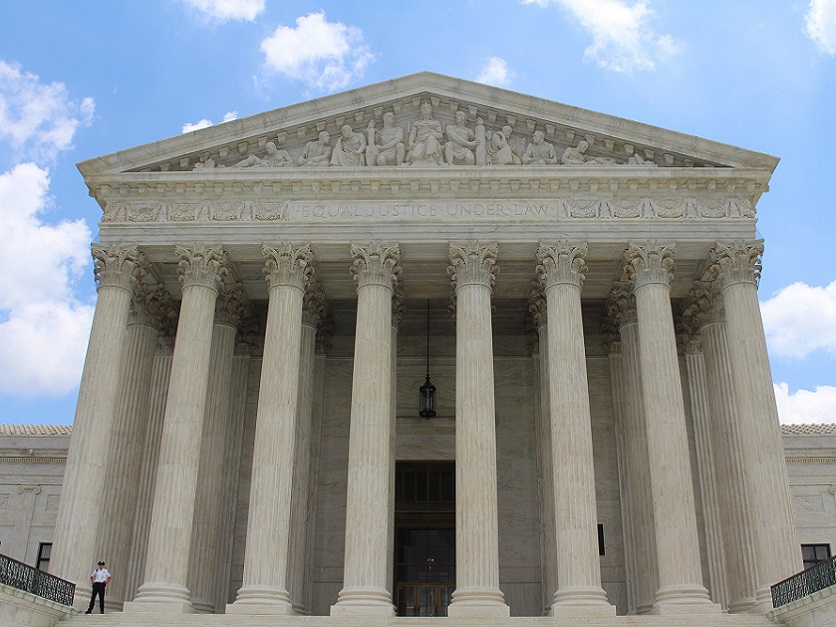Members of the Supreme Court expressed concern Wednesday about pollution that reaches navigable waters by traveling through groundwater, but the justices also worried that residential septic tanks could get swept into the regulatory solutions
“Some clear line for the property owner is really important,” said Justice Brett Kavanaugh toward the end of arguments in a case closely watched by industry and environmental groups as well as the Environmental Protection Agency, which would have to deal with the fallout from the court’s decision, expected next summer.
The case involves discharges from a wastewater treatment plant on the island of Maui. The wastewater is injected into groundwater from wells before ending up in the Pacific Ocean. The Hawai’i Wildlife Fund won in the 9th Circuit Court of Appeals, which concluded last year that the discharges required the county to obtain a National Pollutant Discharge Elimination System permit.
Dozens of states and organizations filed briefs in the case, including the American Farm Bureau Federation and other farm groups, who are worried that if the high court upholds the appeals court decision, many ag practices, such as manure storage, could fall under the regulatory umbrella.
The justices seemed to be struggling throughout the argument to find a way to accept the 9th Circuit’s reasoning without writing EPA a blank check for regulating any pollutants that enter groundwater, even if their connection to navigable waters is tenuous.
The 9th Circuit said in its decision that the county was liable under the CWA in part because the nutrients discharged were “fairly traceable” from the wells, which are considered point sources under the law. Hawai’i Wildlife Fund argued in its brief that the CWA’s “language, purpose, structure, and history all establish that Congress intended to regulate any pollution of navigable waters that is fairly traceable to, and the foreseeable result of, point-source discharges.”
Some of the justices, however, said the fact that pollutants can be traced to their point source and it is “foreseeable” that they would end up in navigable waters would open the door to widespread regulation.
Scientists “can trace all kinds of things,” Justice Stephen Breyer said. After bringing up the matter of septic tanks, he said, “I am worried about 500 million people having to apply for a permit to EPA.”
David Henkin, an attorney with Earthjustice who argued for the Hawai'i Wildlife Fund, said that until April EPA had subscribed to the theory that discharges to groundwater could be regulated if there was a "hydrological connection" between the groundwater and a nearby surface water. Despite that, no "parade of horribles" occurred.
"If Congress had wanted to exempt groundwater, it would have done that," Henkin said.
At the same time, Breyer and Justices Sonia Sotomayor and Elena Kagan asked Maui County attorney Elbert Lin and associate solicitor general Malcolm Stewart, representing EPA, why a company couldn’t just discharge pollutants from a pipe onto land near a river or other navigable water.
In such a scenario, “Nobody would have to get a permit,” Kagan said.
Lin pointed to other laws such as the Safe Drinking Water Act, and to grants and incentives offered by EPA to help states develop non-point source programs.
But Sotomayor said “the question is not whether there’s a possible state backstop,” but about what the CWA covers. Mentioning the Superfund law and SDWA, she said, “All those other statutes have different focuses. This statute is preventive.”
Sotomayor openly wondered how the CWA doesn’t apply when there is a point source in the form of the four injection wells, a discharge, and a receiving body, the Pacific Ocean.
Larry Liebesman, an attorney with Smouse and Mason who has decades of experience in CWA law, said after the arguments that he thinks the court would “uphold the 9th Circuit decision on these facts and basically say there’s got to be a ‘limiting principle’” that would keep EPA from adopting a broad interpretation.
“There’s a whole universe of people that could be affected,” Liebesman said, summarizing the court’s thinking. “We need to put some bounds on what makes sense.”
The question of whether Maui County will continue in the case is still up in the air. The county council and Maui County mayor are arguing in state court over whether the county has the authority to withdraw from the case. The county council voted 5-4 to withdraw, but the mayor does not agree, and the county lawyer agrees with him.
For more news, go to www.Agri-Pulse.com


